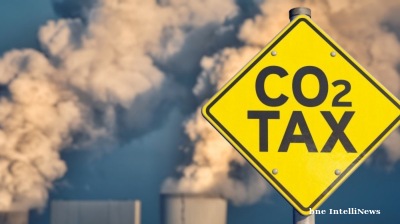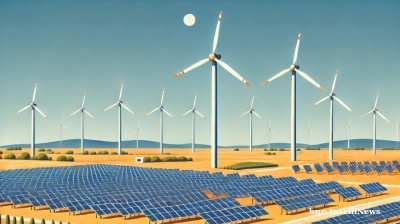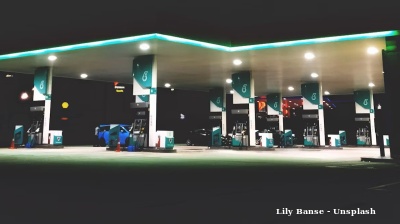India has reached a major milestone in its energy transition journey, achieving 50% of its installed electricity capacity from non-fossil fuel sources, five years ahead of its Nationally Determined Contributions (NDC) target under the Paris Agreement. According to a statement issued by the government of India on July 14, this accomplishment highlights the country’s growing commitment to climate action and sustainable development while demonstrating that the clean energy transition is accelerating.
Union Minister of New and Renewable Energy Pralhad Joshi described the achievement as a proud moment for the nation, stating, “In a world seeking climate solutions, India is showing the way. Achieving 50% non-fossil fuel capacity five years ahead of the 2030 target is a proud moment for every Indian.”
Policy and programme momentum
This milestone reflects India’s strong policy direction, ambitious programmes, and focus on inclusive growth. Flagship initiatives such as PM-KUSUM, PM Surya Ghar: Muft Bijli Yojana, solar park development and the National Wind-Solar Hybrid Policy have played a central role. The bioenergy sector has also emerged as a key contributor, supporting both rural livelihoods and clean energy supply, according to the government.
PM-KUSUM has provided solar-powered pumps to millions of farmers, enhancing energy security and promoting sustainable agriculture. The scheme has opened up opportunities for agrovoltaics and feeder-level solarisation, supporting India’s agricultural economy while reducing emissions. Meanwhile, the PM Surya Ghar scheme, launched in 2024, has driven a rooftop solar revolution, making solar energy accessible to one crore households and empowering citizens to become energy producers.
Installed capacity data highlights the shift
As of June 30, 2025, India’s total installed electricity capacity stood at 484.82 GW. Of this, thermal sources accounted for 242.04 GW, representing just under 50% (49.92%). Non-fossil fuel sources – including renewable energy (RE), large hydro, and nuclear – together reached 242.78 GW, crossing the halfway mark at 50.08%, as per the government data. When shown separately, renewable energy (excluding large hydro) contributed 184.62 GW (38.08%), large hydro added 49.38 GW (10.19%), and nuclear power provided 8.78 GW (1.81%). This detailed breakdown underscores the substantial growth of renewables and hydro in India’s energy mix and confirms the country’s progress in diversifying away from fossil fuels.
Expanding renewables and creating co-benefits
Large-scale solar parks have enabled utility-scale renewable energy deployment at record-low tariffs. Wind energy, particularly in states like Gujarat and Tamil Nadu, continues to be a critical contributor, helping meet peak power demand in the evenings. The bioenergy sector has expanded rapidly, advancing circular economy goals and generating employment in rural regions.
These developments have decarbonised the power sector while delivering additional benefits such as improved energy access, job creation, reduced air pollution, better public health and stronger rural incomes. India’s energy transition demonstrates that climate action can be closely linked to inclusive growth and social development.
A global example of climate leadership
India’s progress is notable globally, especially considering its relatively low per capita emissions. The country remains among the few G20 members on track to meet or surpass their NDC commitments. On international platforms like the G20 and UN climate conferences, India has consistently advocated for climate equity, sustainable lifestyles, and development pathways that balance growth and environmental protection.
By achieving the 50% non-fossil milestone well ahead of schedule, India reinforces its role as a clean energy leader, showing that economic growth and environmental responsibility can advance together, the government said.
Looking ahead: focus on equity and resilience
This early achievement offers an opportunity to set higher goals and focus on equity, quality, and resilience in the next phase of India’s energy transition. Doubling per capita clean electricity consumption, particularly in rural and underserved areas, is essential. This includes scaling up distributed renewable energy systems and promoting efficient appliances to ensure reliable, affordable access.
Building a robust, digitally integrated grid capable of managing high renewable penetration, demand fluctuations and two-way power flows will be crucial. Developing battery energy storage systems (BESS) and pumped hydro storage will further support grid stability and 24x7 renewable supply.
Promoting circularity in solar panels, wind turbine blades, and batteries will help ensure responsible resource use. Accelerating investment in green hydrogen as a future industrial fuel will also be vital to deepening decarbonisation across sectors.
bneGREEN

EXPLAINER: What is the EU’s CBAM and how will it affect global trade from 2026?
The European Union’s Carbon Border Adjustment Mechanism (CBAM) will enter its full operational phase on January 1, 2026, marking a major shift in global climate and trade policy.

Iran faces critical water crisis after driest year in five decades
Iran faces critical water crisis after driest year in five decades with 40% nationwide rainfall drop.

Global renewables to double by 2030, but IEA warns momentum must accelerate
Global renewable energy capacity is on course to double by 2030, reaching 4,600 GW—comparable to the current combined total of China, the European Union and Japan—according to the International Energy Agency’s Renewables 2025 report.

South Korea’s embrace of SMRs as a pillar of nuclear policy
Spearheaded by Korea Hydro & Nuclear Power, these compact reactors are increasingly being seen as central to the nation's energy policy, offering flexibility, scalability, and ultimately a pathway to carbon neutrality




